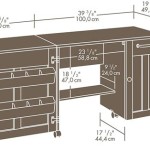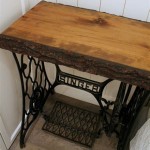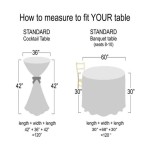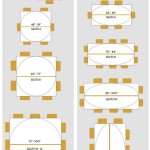How To Clean Candle Wax Off A Table
Spilled candle wax on a table is a common household mishap. Whether it's a drip from a lit candle or an entire candle toppling over, removing wax from a table surface requires a methodical approach. The success of the removal process largely depends on the type of table material, the kind of wax spilled, and the promptness of the reaction. The following guide provides several effective methods to remove candle wax from various table surfaces, minimizing the risk of damage.
Before attempting any cleaning methods, it is crucial to identify the table material. Wood, glass, marble, and metal surfaces each react differently to heat and solvents. Using the wrong approach can lead to scratches, discoloration, or other permanent damage. Understanding the table's finish is also important. Tables with delicate finishes require gentler methods compared to those with more durable sealants.
Furthermore, the type of wax influences the removal process. Paraffin wax, a common type found in many candles, tends to be brittle when cold and relatively easy to scrape off. Soy wax, on the other hand, is softer and might require a different approach. Identifying the type of wax can help determine the most effective and safest cleaning technique.
Freezing the Wax
One of the most effective methods for removing candle wax, particularly from hard surfaces, is by freezing it. This method is suitable for wood, glass, marble, and certain metal surfaces. The cold temperature makes the wax brittle, allowing it to be easily chipped or scraped off.
The first step is to apply a cold compress to the wax. This can be achieved by placing ice cubes in a plastic bag, sealing it tightly to prevent water leakage, and then placing the bag directly on the wax. Ensure that the plastic bag does not directly contact delicate surfaces, such as polished wood. In such cases, place a thin cloth between the bag and the table.
Allow the ice to remain on the wax for approximately 15 to 20 minutes. The duration depends on the thickness of the wax spill. The goal is to thoroughly chill the wax, making it as brittle as possible. Regularly check the wax's consistency by gently pressing on it. If it remains pliable, continue the freezing process.
Once the wax is sufficiently frozen, use a dull-edged tool to gently chip away at the wax. A plastic scraper, a credit card, or even the edge of a spoon can be used. Avoid using sharp objects like knives, as they can easily scratch the table surface. Work carefully, applying gentle pressure to lift the wax away from the table. If the wax still resists removal, repeat the freezing process.
After removing the bulk of the wax, there might be a residue remaining on the table. This residue can be addressed with a mild cleaner appropriate for the table's material. For wooden tables, a wood cleaner or a mixture of water and vinegar can be used. For glass or marble, a glass cleaner or a specialized stone cleaner is recommended. Apply the cleaner to a soft cloth and gently wipe the affected area. Avoid using abrasive cleaners, as they can damage the table's finish.
Heating the Wax
Another common method for removing candle wax involves applying heat. This method is particularly useful for fabrics or porous surfaces where freezing is not practical. The heat melts the wax, allowing it to be absorbed by an absorbent material.
Gather the necessary materials, including an iron, paper towels, and a clean cloth. Ensure the iron is set to a low heat setting, and that the steam function is turned off. Place a layer of paper towels over the wax spill. The number of paper towels needed depends on the size and thickness of the wax spill.
Gently place the heated iron over the paper towels. Move the iron in a slow, circular motion. The heat from the iron will melt the wax, which will then be absorbed by the paper towels. Periodically check the paper towels and replace them as they become saturated with wax. Continue this process until no more wax is being absorbed by the paper towels.
For textured or porous surfaces, it might be necessary to use a clean cloth dampened with a mild solvent, such as mineral spirits. Gently rub the cloth over the affected area to dissolve any remaining wax residue. Always test the solvent in an inconspicuous area first to ensure it does not damage the table's finish.
After removing the wax and any residue, clean the area with a mild soap and water solution. This will help remove any remaining traces of the solvent and prevent any discoloration. Dry the area thoroughly with a clean cloth. For wooden tables, consider applying a furniture polish to restore the shine and protect the finish.
Using Solvents
In some cases, freezing or heating may not be sufficient to remove candle wax, especially if it has deeply penetrated the table's surface. In such situations, solvents can be employed to dissolve the wax. However, it is crucial to use solvents with caution, as they can potentially damage the table's finish.
The choice of solvent depends on the type of table material and the type of wax. Mineral spirits, rubbing alcohol, and commercial wax removers are common options. Always test the solvent in an inconspicuous area before applying it to the entire spill. This will help determine if the solvent will discolor or damage the table's finish.
Apply the solvent to a clean cloth and gently rub the affected area. Avoid pouring the solvent directly onto the table. Allow the solvent to sit on the wax for a few minutes to dissolve it. Then, wipe away the dissolved wax with a clean cloth. Repeat this process as necessary until all the wax is removed.
After removing the wax, clean the area with a mild soap and water solution. This will help remove any remaining traces of the solvent. Dry the area thoroughly with a clean cloth. For wooden tables, consider applying a furniture polish to restore the shine and protect the finish. For other materials, use a cleaner appropriate for the table's surface.
When using solvents, ensure adequate ventilation in the room. Wear gloves to protect the skin from irritation. Always follow the manufacturer's instructions for the solvent. Dispose of used cloths and solvents properly, according to local regulations.
Regardless of the method used, patience and careful execution are key to successfully removing candle wax from a table without causing damage. Start with the gentlest method and gradually increase the intensity as needed. Regularly assess the table's surface to ensure that the cleaning process is not causing any harm. With the appropriate techniques and materials, it is possible to restore a table to its original condition after a candle wax spill.

4 Ways To Dewax A Table Wikihow

How To Easily Remove Candle Wax From Furniture Today S Homeowner

How To Remove Candle Wax Stain From A Light Colored Wood Table Hometalk

The Best Way To Remove Wax From Furniture Repair Refinishing

How To Remove Wax From Any Surface Without Damage Manmadediy

How To Remove Wax Stains From Any Surface

How To Remove Candle Wax From Wood 4 Easy Methods Prudent Reviews

4 Easy Ways To Remove Candle Wax From Wood Wikihow Fun

Haley S Hints Safely Remove Candle Wax From Wood Furniture

3 Ways To Remove Wax From A Glass Table Top Wikihow








